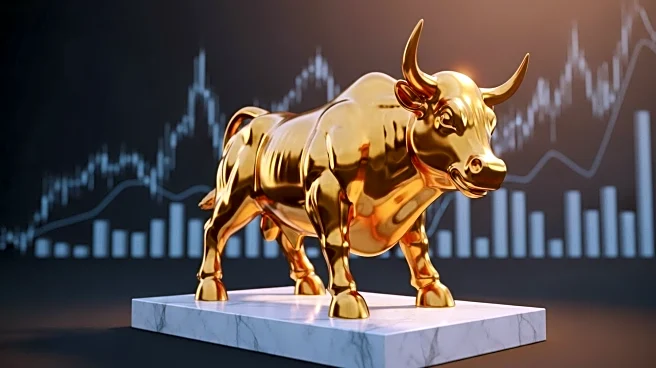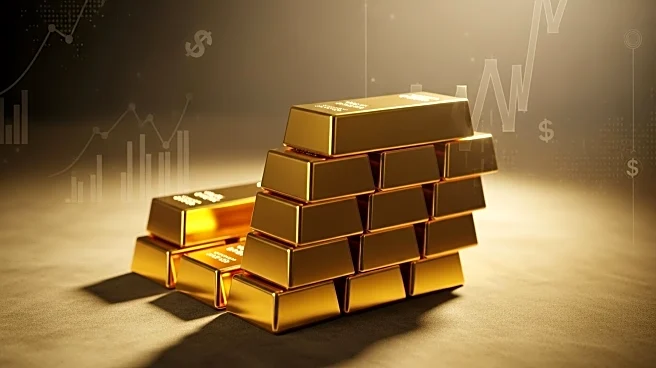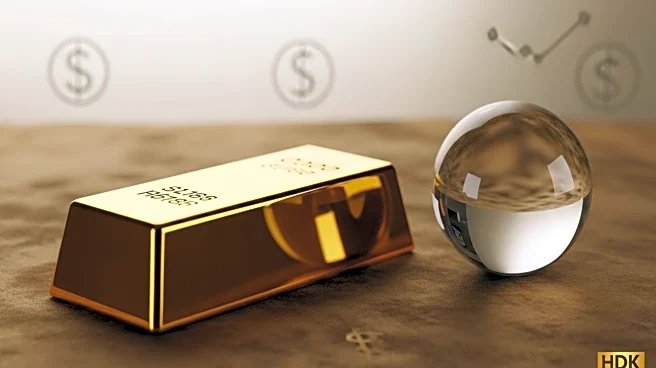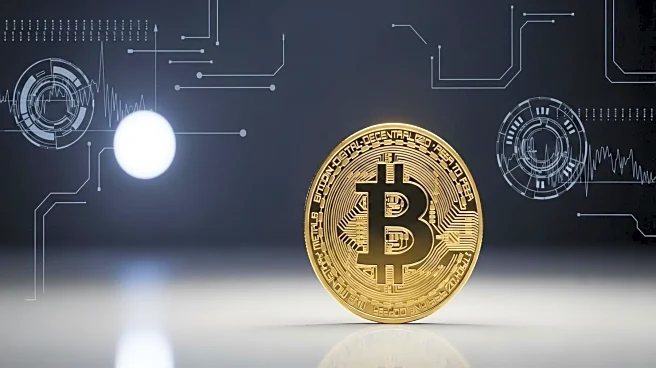What's Happening?
Gold prices have been on a significant upward trajectory, with the precious metal recently reaching an all-time high of $3,880.8 per ounce. This marks a 47% increase in its value this year. Aakash Doshi, head of gold strategy for State Street Investment Management, suggests that the price of gold could surpass $4,000 per ounce by the end of 2025 or early 2026. This prediction is driven by several factors, including the ongoing uncertainty surrounding the U.S. government shutdown, a weakening U.S. dollar, and anticipated interest rate cuts by the Federal Reserve. The Fed is expected to reduce rates in October and December, which could further support gold prices by lowering the opportunity cost of holding non-yielding assets like gold. Additionally, global inflows into gold exchange-traded funds (ETFs) have been the highest since 2020, indicating strong investor interest.
Why It's Important?
The potential rise in gold prices to $4,000 per ounce could have significant implications for investors and the broader financial markets. As a traditional safe-haven asset, gold often attracts investors during times of economic uncertainty or when the dollar weakens. The expected interest rate cuts by the Federal Reserve could further drive demand for gold, as lower rates reduce the opportunity cost of holding non-yielding assets. This scenario could lead to tighter supply-demand balances in the gold market, potentially driving prices even higher. Investors in gold ETFs, such as State Street's SPDR Gold Trust, could see substantial returns if the price predictions materialize. Additionally, the weakening dollar could impact international trade and the purchasing power of U.S. consumers.
What's Next?
If the Federal Reserve proceeds with the anticipated rate cuts, it could further influence gold prices and investor behavior. Market participants will likely monitor the Fed's actions closely, as well as any developments related to the U.S. government shutdown and its impact on the economy. The continued inflow into gold ETFs suggests that investors are positioning themselves for potential gains, and any changes in economic indicators or geopolitical events could further affect gold's trajectory. Stakeholders in the financial markets, including investors and policymakers, will need to consider these dynamics as they make decisions in the coming months.










